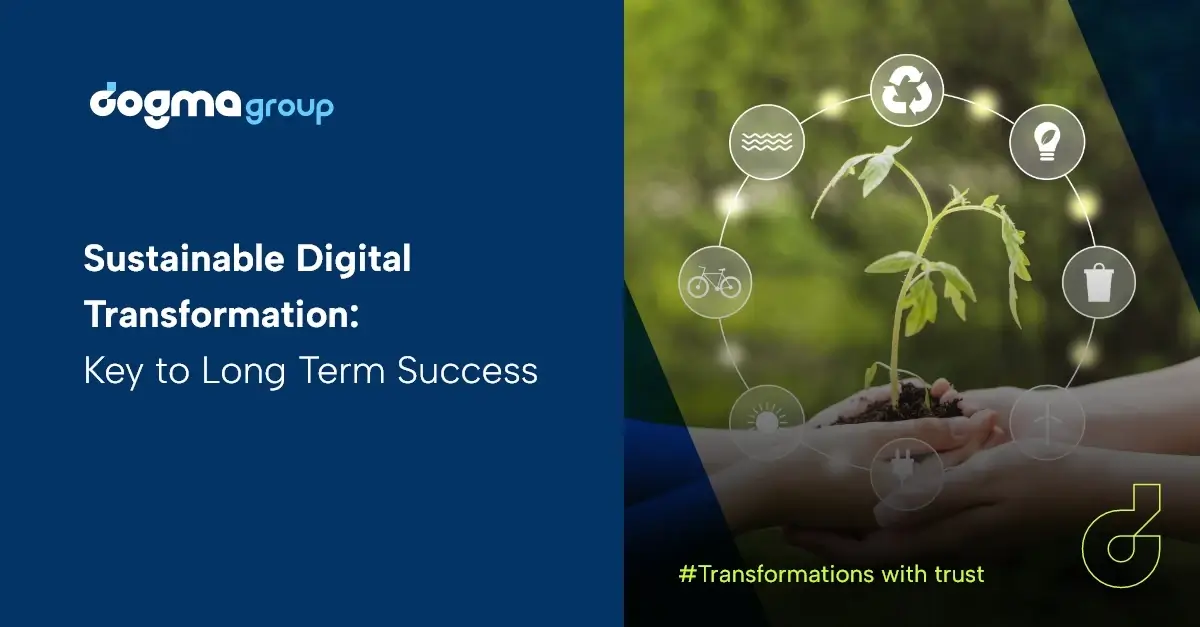A breakthrough year for digital transformation, 2020, saw many companies becoming more competitive to determine which company can embrace digitisation faster. However, although the quest was commendable, the quick digital transformation initiatives that many businesses picked were not carried out sustainably. For sustainable digitisation, you need integrated, comprehensive, scalable and agile technology.
No doubt, the pandemic was a catalyst for rapid digitisation. But most businesses treated this as a patchwork and tried a solution that only fixed their pressing problem. For example, many companies adopted autonomous, disruptive video conferencing solutions as an ultimate solution to connect with teams and stakeholders remotely, considering that this adoption was about transitioning from being non-digital to digital businesses. However, as the organisation did not invest significantly in integrated and comprehensive core technology, this approach focused on the short term and did not enable it to become a digital frontrunner. Moreover, over time, these many solutions could not integrate well with one another, which added to the overall IT costs.
Because sustainable technologies are increasingly considered “vital” rather than merely “good to have”, the time is perfect to start undertaking digital transformation sustainably. Furthermore, because sustainable technologies are constantly evolving, businesses can be confident that choosing sustainable solutions like cloud-based platforms will result in cost savings and increased productivity.
Reasons why the leaders today need to consider sustainable digital transformation:
1. Infrastructure that can harness the value of data holds the key to a sustainable future
Many businesses eventually discovered that to effectively develop a cohesive business process and gain a holistic view of your customers; you need to collect data.
For example, you need centralised and integrated real-time data that powers your sales and marketing processes for a robust customer-oriented team. Customer Relationship Management solutions like Dynamics 365 and Salesforce offer a range of modules. It automates rule-based tasks and has intelligence tools such as Power BI in Dynamics 365 and Einstein AI in Salesforce that identify data points to help your customer-oriented teams understand customer sentiment, purchase habits and brand loyalty.

Similarly, for a streamlined business process, you need to keep track of and manage things like the company’s resources, cash level, payroll information and purchase orders helping you maintain organised workflow, operational efficiency and compliance. For instance, you can acquire high-quality insights from your data when it is centrally stored, which helps organisations make the right decisions. However, if your data is not centralised, there is a risk that the same data will be inaccurate, duplicated, or inconsistently entered into numerous systems. This could lead you to make wrong decisions and cause financial loss, resulting in both short- and long-term consequences. This is especially true in the case of the supply chain. Technology like Dynamics 365 Business Central consolidates all your company’s data into a single source of truth, combines ERP and CRM functionalities and integrates seamlessly with Microsoft Business Apps giving you a seamless experience while handling tasks and boosting your productivity.
To put it briefly, digital solutions that maximise the value of data from multiple departments can propel your company to new heights in the long run.
2. Designed for scalability, Cloud computing saves your effort, time and budget
The perks of adopting cloud computing are countless. Therefore, the world is widely embracing this digital innovation. According to a study by Grand View Research, the global cloud-managed services market size is expected to reach USD $82.51 billion by 2025.
Cloud computing allows us to work and store data in a virtual setting, significantly reducing waste. We no longer need to carry USB drives for storage and paper consumption has already dropped in workplaces.

Cloud computing saves time and effort as you don’t need to purchase more hardware for more storage and can request more bandwidth. Also, you don’t have to invest time and money into maintenance and can outsource the responsibility to a cloud service provider. Your company also saves effort to put together a specialist IT team and subscribe to the expert team from the service provider.
You can pay for only what your business needs by implementing cloud computing. This reduces costs by optimising both software licences and hardware or storage purchases both on-premise or within the data centre.
How can organisations begin a path toward digital transformation?
Your team’s efficiency through automation, a centralised platform and a cloud-based structure can help businesses meet their sustainability goals faster. However, digital transformation is not a single thing but a multi-faceted journey with different objectives. So, you need to know other pillars to understand how to invest appropriately to set yourself up for success. Here are some foundations to remember before you embark on the journey.
1. Modernising existing IT
Sustainable digital transformation for many organisations starts with upgrading the company’s legacy infrastructure. This creates a more robust platform to move forward, giving you an option to wisely position your IT infrastructure in favour of your business goals. When completed, the tech upgrade provides your company with access to up-to-date tools and numerous benefits. Better staff efficiencies, increased agility, streamlined procedures for effortless execution of business strategies, improved security and minimised operation costs are smoothly achieved with your slight investment in upgrading the IT infrastructure.
For example, suppose you’re using a legacy supply chain system that requires more paperwork that gives an unclear view of the data. In that case, the demand forecasting may be inefficient and not accurate, and you may end up producing more goods than required, which may end up going to waste. Upgrading to Dynamics 365 Business Central enables users with many additional features to boost productivity and efficiency. In addition, Dynamics 365 Business Central helps you access business insights, enhance operational efficiency and get the cloud advantage compared to the legacy solution.
2. Agility
In conventional technology practices, everything is configured before users use the system. However, sustainable technology is such that it can adapt and have your systems evolve along with you to enable digital transformation. The businesses can configure the solution as per their specific business needs. For instance, earlier, retail businesses only had to deal with in-person transactions, but due to changing business landscape, now they must deal with online orders as well, which will affect how they store inventory, forecast demand, fulfil orders and so on. The agile method is crucial as it is well-suited for handling the always-changing client needs.
With one out-of-the-box solution, you can save costs in multiple implementations, licensing, system obsolescence and so on. This way, the C-suite executives won’t need to drain their effort into selecting a new solution each time problems arise or the business landscape changes.
Companies can become responsive and operate at the pace their customers want by migrating systems to the Cloud, enhancing agile software development. Cloud computing can swiftly scale new solutions on top of an organisation’s tech stack. What’s more, flexibility, openness to change and adaptability are the three most important factors when it comes to survival and sustenance. Thus, agility has a crucial space in sustainable digital transformation.
3. Mindful and sustainable use of technology
Sustainability and digital transformation continue to take centre stage on company agendas and are now considered connected when it comes to growth. So, how do we ensure that true sustainability lives at the core of the solution we deploy for our employees and the overall business?
Most organisations can’t afford to keep changing their systems every few years, so they need to look at future-proof sustainable solutions and bring down their Total Cost of Ownership (TCO) significantly.
When designing new systems and interfaces, the challenges faced by the team should be synced with the solution being built and need to address how the profile fills the needs of each role. Being empathetic to customers, employees and the environment while designing technologies is critical to getting buy-in and will set businesses and their products apart from competitors.
4. Embrace product as a service to save resources
The service economy is already here. As sustainability and business have already started going hand in hand, there’s an increasing need to redefine a company’s business models. In Product-as-a-service, the customers pay for outcomes and not products. Instead of buying and operating IT equipment, they consume it as a service, reducing capital expenditures and environmental footprint.
Product-as-a service model provides the flexibility to update the product easily when desired, the ability to save money on purchases every time and a lesser risk of personal liability than ownership.
What’s Next?
With sustainable technological projects, we can make smarter decisions, all thanks to the analytics and visibility they provide. Besides this, these technologies align with the goals of sustainable development. For example, Cloud-based enterprise software allows delivery from a more organised and efficient data centre. It reduces total energy consumption and greenhouse gas emissions as they control the inefficient data centre used by several companies. Cloud also allows you to work from anywhere reducing the carbon emission from the commute.
Similarly, the use of an integrated out-of-the-box solution, like Dynamics 365 and Salesforce, records all the data in one place, reducing the number of spreadsheet files and, thus, decreasing the number of paper prints.
As a trusted advisor, Dogma Group strives to offer a future-proof solution while positively impacting our planet and the economy. Learn more about how we, as a global entity, focus on sustainable digital technology implementation.





